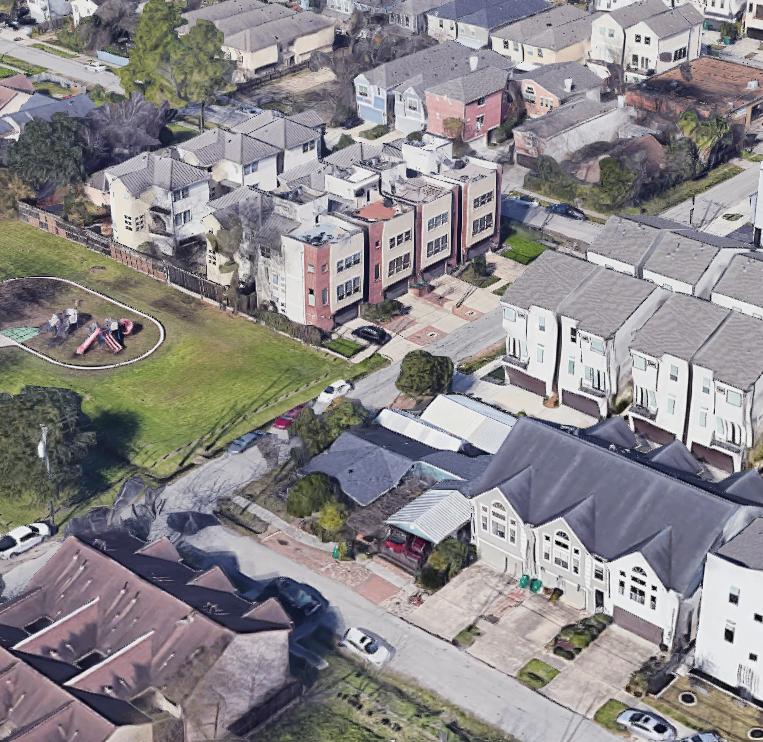Physical Address
304 North Cardinal St.
Dorchester Center, MA 02124
Physical Address
304 North Cardinal St.
Dorchester Center, MA 02124


In two previous posts, I’ve raised questions about the competitiveness of missing middle housing. This post is more petty: I want to challenge the design rigidities that Daniel Parolek promotes in Missing Middle Housing. Although petty, it’s not irrelevant, because Parolek recommends that cities regulate to match his design goals, and such regulations could stifle some of the most successful contemporary infill growth.
Parolek’s book suffers from his demands that missing middle housing match his own tastes. For instance, he has a (Western?) bias against three-story buildings. Having grown up in the Northeast, I think of three stories as the normal and appropriate height for a house. To each his own – but Parolek’s constant insistence on this point offers aid to neighborhood defenders who will be happy to quote him to make sure three-story middle housing remains missing.
No form is in Parolek’s doghouse as much as the “tuck-under” townhouse, an attached house with a garage on the first floor. This is clearly a building that builders and buyers love: “If your regulations do not explicitly prohibit it, it will be what most builders will build” (p. 140). In fact, tuck-under townhouses are probably the most successful middle housing type around.
In lightly-regulated Houston, builders small and large have been building townhouses, sometimes on courtyards perpendicular to the road. Parking is tucked. Townhouses are usually three stories tall (bad!), sometimes four. A few are even five stories. Their courtyards are driveways (also bad!).
In a very different context – Palisades Park, NJ – tuck-under duplexes are everywhere. Their garages are excessive thanks to high parking minimums, but the form has been very successful nonetheless.
These examples are not to be dismissed lightly: these are some of the only cases where widespread middle housing is replacing single-family housing in walkable communities. Houston is the only substantial city in the US that is moving from a sprawl-only model to having a large, walkable urban core, and the tuck-under townhouse is making it happen.
What’s so bad about tuck-unders? Parolek says they’re too tall and the garage creates a “lack of activation” (p. 140). It seems to me, from walking and cycling around some of the many townhouse neighborhoods in Maryland and Virginia, that garages are the most street-activating feature of a house and are regularly left open while kids play or men tinker with their cars. Who interacts with a neighbor by peering in their kitchen window?

These posts have been excessively critical only because missing middle is so popular among urbanists as to warrant a corrective. “Gentle density,” as it is often called, can be a great strategy for squeezing some units into built-out neighborhoods. The runaway success of Houston townhouses and, newly, Los Angeles ADUs, certainly demonstrates that missing middle housing types can be instruments of large-scale change.
But missing middle housing cannot, on its own, achieve everything Parolek suggests. Although it fits well into walkable contexts, it is not inherently walkable. The neighborhood Parolek designed outside Omaha is definitely not walkable in the sense of having access to destinations. It’s true that low parking provision is a natural fit with walkability, but that can be achieved with any type of housing.
Nor is newly-built missing middle uniquely geared toward affordable structures. In low-cost areas, manufactured housing owns that crown. Where land costs are high, large-scale multifamily can beat smaller forms for affordability by dividing up the cost and providing small-scale units.
Where missing middle really excels, as most urbanists already understand, is in single-family neighborhoods. Single-family lots are typically too small for large multifamily structures. Politically, missing middle is palatable to neighbors in ways that larger buildings and manufactured homes are not.
So welcome that missing middle housing! And don’t be too picky about it.